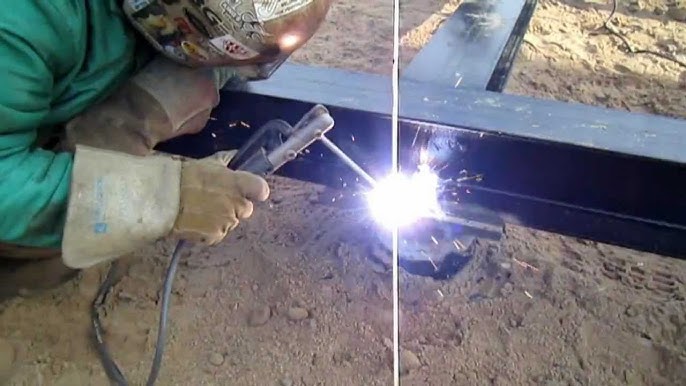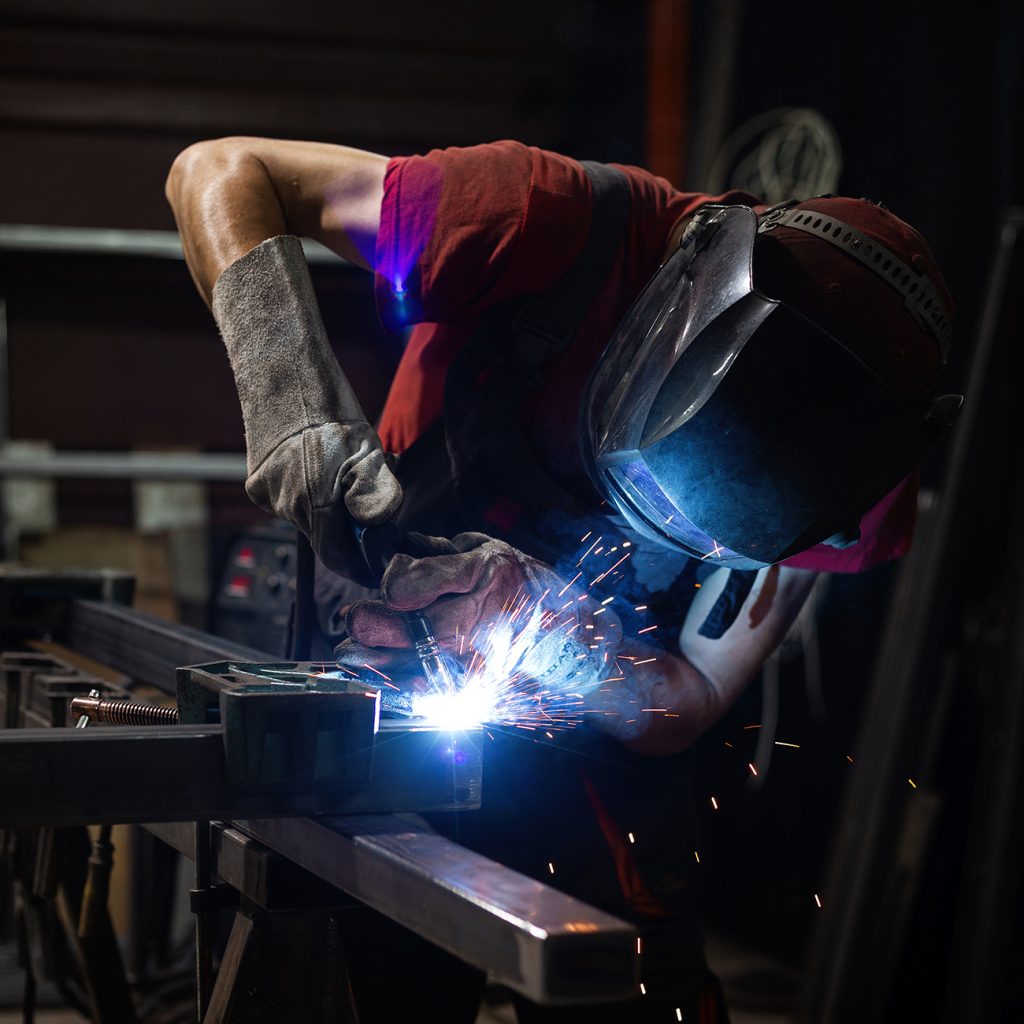Common Welding Repair Work Issues and How to Address Them Properly
Welding fixings frequently experience a variety of issues that can jeopardize the stability of the end product. Common troubles consist of insufficient penetration, porosity, and misalignment, among others. Each issue offers one-of-a-kind obstacles that call for certain methods for resolution. Comprehending these problems is crucial for welders intending to boost their results and abilities. This conversation will discover these usual welding repair work problems and efficient approaches to address them.
Poor Penetration
Insufficient penetration takes place when the weld steel falls short to completely fuse with the base material, resulting in weak joints and potential structural failures. This issue usually originates from inadequate warm input, incorrect electrode angle, or incorrect welding rate. Welders might run into poor penetration because of a miscalculation of the essential parameters for a particular product density or type. In addition, contamination on the base material's surface area can impede reliable bonding, intensifying the trouble. To address insufficient infiltration, welders should assure ideal setups on their equipment and preserve a tidy job surface area. Normal assessment of welds is recommended to identify any kind of deficiencies early, permitting prompt modifications and the prevention of endangered architectural stability in welded assemblies.
Porosity
Porosity is a common problem in welded joints that shows up as small gas bubbles trapped within the weld metal. This problem can compromise the integrity of the weld, causing lowered stamina and potential failure under stress and anxiety. Belgrade Fabrication. Porosity typically develops from contamination, dampness, or inappropriate welding techniques, which permit gases to get away right into the molten weld pool. To deal with porosity, welders need to ensure appropriate surface area preparation, maintain a tidy workplace, and make use of suitable welding parameters. Furthermore, selecting the appropriate filler material and shielding gas can minimize gas entrapment. Routine evaluation and screening of welds can help recognize porosity early, ensuring prompt corrective actions are taken, thereby protecting the quality and integrity of the bonded framework
Misalignment
Misalignment in welding can arise from numerous aspects, consisting of inappropriate arrangement and thermal development. Comprehending the origin creates is crucial for reliable resolution. Several adjustment methods are offered to realign components and ensure structural honesty.
Sources of Misalignment
Welding misalignment often stems from a variety of underlying issues that can endanger structural integrity. One main reason is improper fit-up of components prior to welding, which can lead to gaps and unequal surfaces. Variations in thermal growth throughout the welding procedure can additionally cause distortion, specifically if the materials being signed up with have various coefficients of development. Additionally, inadequate securing and fixturing might stop working to hold elements safely in place, causing motion throughout welding. Inadequately maintained devices, including welding equipments and devices, might present variances in the weld bead, more adding to misalignment. Lastly, driver error, stemming from not enough training or experience, can additionally play a significant role in producing misaligned welds.
Adjustment Methods Available
Resolving misalignment efficiently needs a mix of restorative techniques tailored to the specific issues handy. One typical method is using jigs or components to hold elements in the right placement throughout welding, making certain constant alignment. Additionally, pre-heating the materials can help in reducing distortion and improve fit-up. For substantial imbalance, mechanical realignment techniques, such as utilizing hydraulic jacks or clamps, can be used to deal with the position prior to welding. Post-weld heat treatment may additionally be necessary to eliminate stresses triggered by imbalance. Ultimately, cautious inspection and adjustment throughout the setup stage can protect against misalignment concerns from coming to be considerable issues, promoting a smoother welding procedure and improving total architectural honesty.
Distortion
Distortion is an usual difficulty in welding that can develop from numerous variables, consisting of irregular heating & cooling. Recognizing the reasons for distortion is necessary for applying efficient prevention techniques. Resolving this concern not only boosts architectural integrity but likewise enhances the overall quality of the weld.
Sources of Distortion
When subjected to the intense heat of welding, materials typically undertake changes that can cause distortion. This sensation mostly arises from thermal development and contraction during the welding process. As the weld area warms up, the product increases; upon air conditioning, it contracts, which can produce inner anxieties. Furthermore, unequal heating throughout a work surface can aggravate these anxieties, causing bending look here or bending. The kind of material also plays a significant function; metals with varying thermal conductivity and coefficients of growth may respond in a different the original source way, bring about unpredictable distortions. Inadequate joint layout and poor fixturing can contribute to misalignment throughout welding, increasing the probability of distortion. Recognizing these reasons is important for efficient welding repair service and avoidance techniques.
Prevention Techniques
Reliable avoidance techniques for distortion throughout welding emphasis on controlling warm input and guaranteeing correct joint design. Preserving a consistent heat input aids to minimize thermal growth and contraction, which can result in distortion. Making use of strategies such as pre-heating the work surface can additionally reduce the temperature gradient, promoting uniform heating. Furthermore, selecting appropriate joint layouts, such as T-joints or lap joints, can enhance stability and reduce tension focus. Carrying out proper fixturing to safeguard the work surfaces in position further help in maintaining positioning during the welding procedure. Finally, staggered welding sequences can disperse heat more uniformly, avoiding localized distortion. By using these techniques, welders can significantly reduce the probability of distortion and improve the general quality of their welds.
Breaking
Cracking is a typical concern come across in welding repairs, usually arising from different elements such as inappropriate cooling rates, product choice, or insufficient joint preparation. The occurrence of splits can considerably jeopardize the honesty of the weld, resulting in possible failings during operation. To resolve this problem, welders must initially analyze the root creates, making sure that materials are suitable and suitably chosen for the certain application. Furthermore, regulating the air conditioning price throughout the welding procedure is important; fast air conditioning can cause tension and lead to fracturing. Proper joint layout and prep work additionally add to reducing the threat. Carrying out these techniques can enhance weld quality and durability, eventually minimizing the likelihood of cracking in completed weldments.

Insufficient Combination
A considerable issue in welding repair services is incomplete combination, which takes place when the weld steel does not properly bond with the base material or previous weld passes - Montana Mobile Welding and Repair Belgrade Fabrication. This flaw can result in weak points in the joint, potentially endangering the honesty of the welded structure. Factors adding to incomplete blend consist of inadequate warm input, improper welding strategy, and contamination of the surface areas being signed up with. To address this concern effectively, welders ought to assure appropriate pre-weld cleansing and surface area preparation, as well as readjust their welding criteria to achieve adequate penetration and blend. Regular assessment throughout the welding process can additionally assist identify incomplete blend early, permitting timely corrective procedures to boost the overall top quality of the weld
Overheating
While welding repairs can enhance architectural stability, overheating presents a substantial obstacle that can lead to material degradation. Too much warm throughout welding can modify the mechanical homes of steels, leading to decreased toughness, enhanced brittleness, and bending. This phenomenon is specifically essential in high-stress applications where architectural reliability is paramount. Identifying overheating can entail aesthetic inspections for staining or distortion, along with keeping track of temperature level during the welding process. To minimize the threats connected with getting too hot, welders must employ ideal techniques, such as controlling warm input, readjusting travel rate, and making use of suitable filler materials. Furthermore, carrying out pre- and post-weld warmth treatments can assist recover material buildings and enhance the general Visit Your URL high quality of the repair work, ensuring lasting efficiency and safety.
Often Asked Questions
What Are the Common Indicators of a Welding Issue?

Just How Can I Test My Welds for Top quality?
To check welds for high quality, one can utilize visual evaluations, ultrasonic screening, and radiographic approaches. Each strategy ensures architectural integrity, recognizes issues, and verifies adherence to specified standards, inevitably enhancing the reliability of the bonded joints.
What Safety Precautions Should I Take While Welding?
When welding, one must prioritize security by using appropriate personal protective tools, ensuring correct ventilation, protecting flammable products away, keeping a tidy workspace, and being aware of surroundings to protect against injuries and crashes.
Can I Fix a Weld Without Renovating the Entire Joint?
Repairing a weld without renovating the whole joint is feasible, relying on the damage (Montana Mobile Welding and Repair Welding). Strategies such as grinding, including filler product, or using a welding process can efficiently resolve particular flaws while maintaining the surrounding structure
What Tools Are Necessary for Efficient Welding Repair Works?
Vital tools for effective welding repairs include a welding machine, cable brush, mill, safety gear, clamps, and filler products. Each tool plays an essential role in ensuring quality and security during the repair service process. Porosity generally arises from contamination, wetness, or incorrect welding methods, which enable gases to escape into the molten weld pool. Improperly kept devices, consisting of welding devices and tools, may present incongruities in the weld bead, further contributing to imbalance. When subjected to the extreme warmth of welding, materials typically undertake modifications that can lead to distortion. Splitting is a typical issue run into in welding repair work, often resulting from different elements such as improper air conditioning prices, material choice, or insufficient joint preparation. A significant problem in welding fixings is incomplete combination, which takes place when the weld steel does not effectively bond with the base material or previous weld passes.